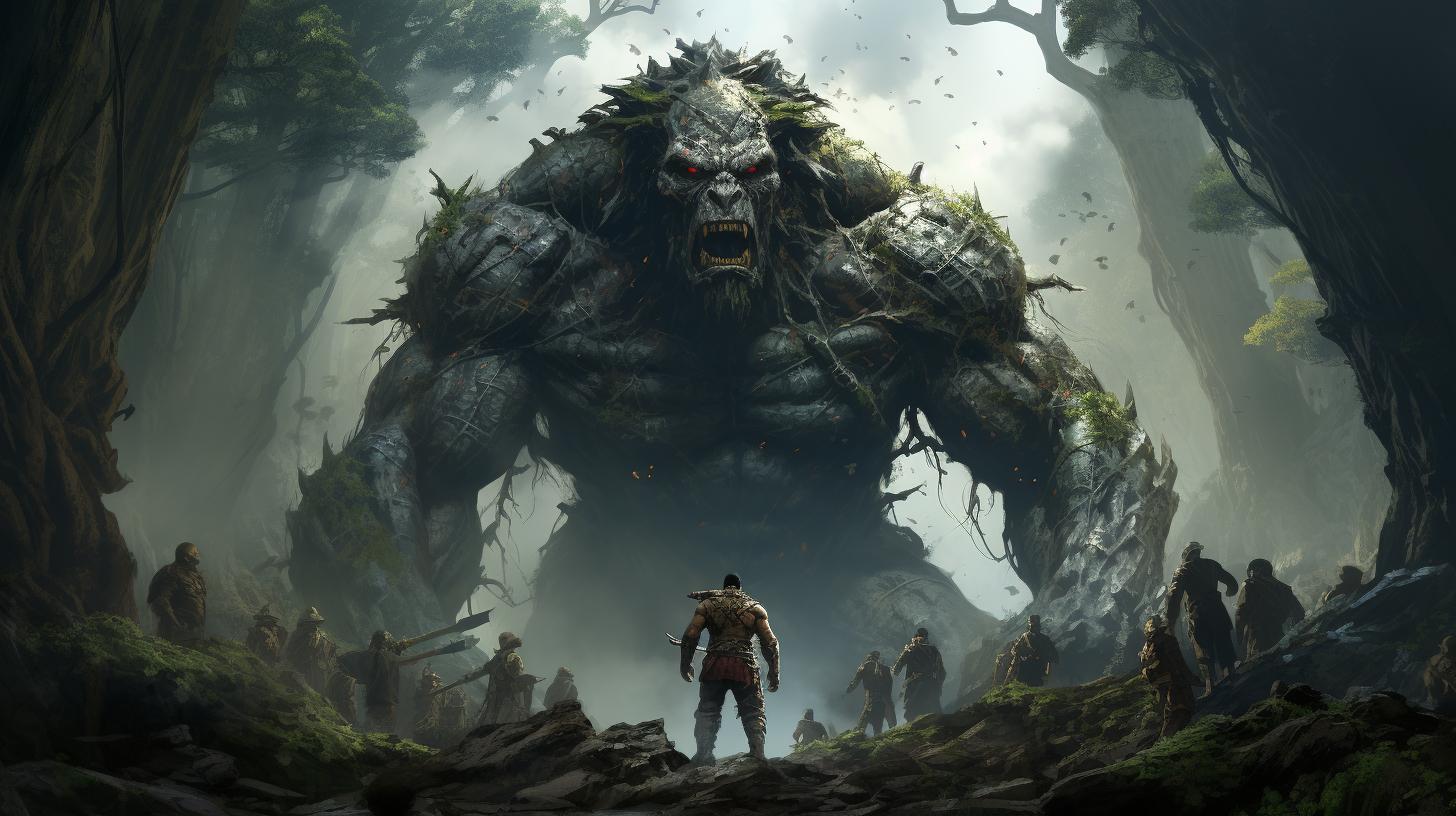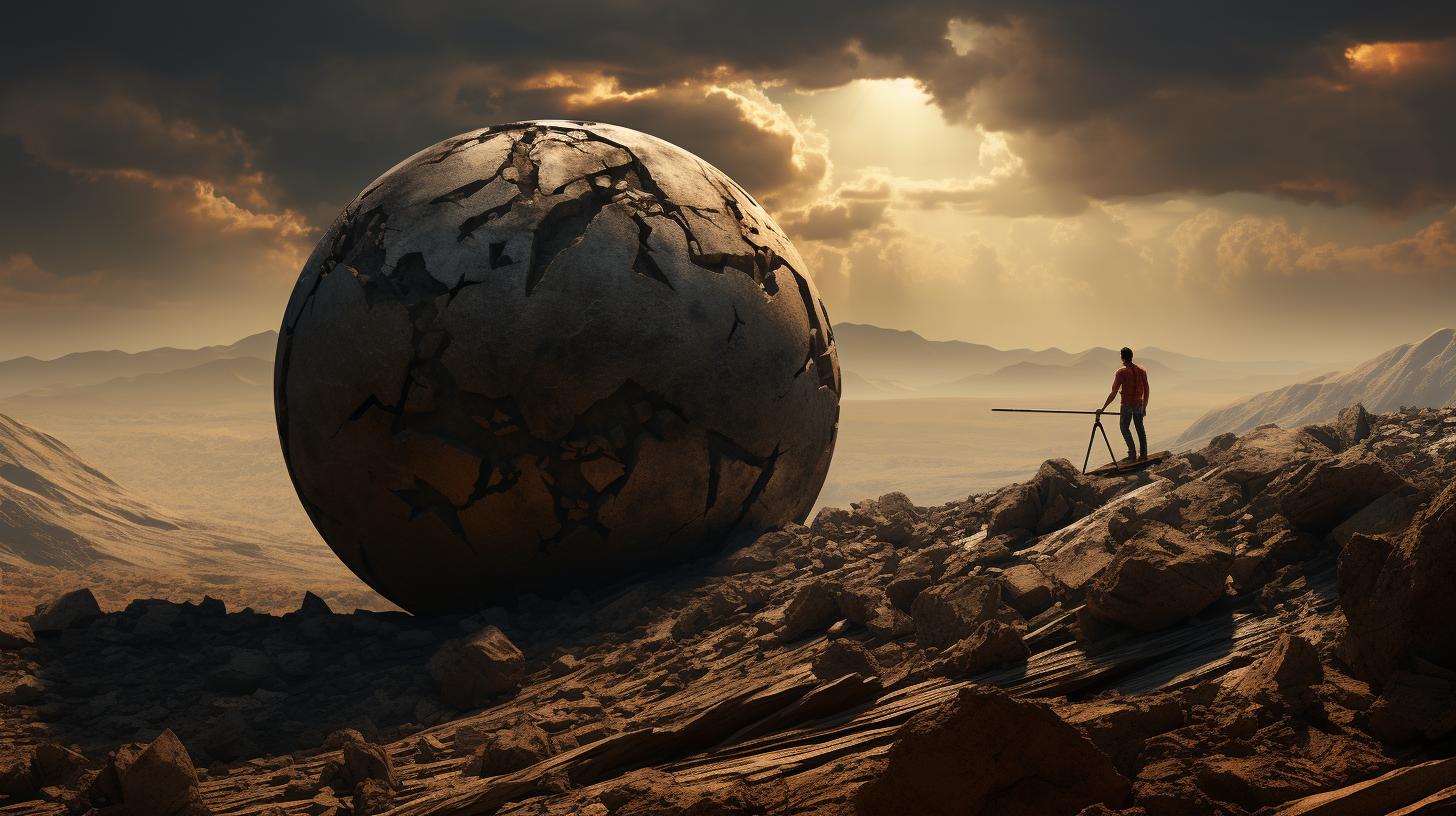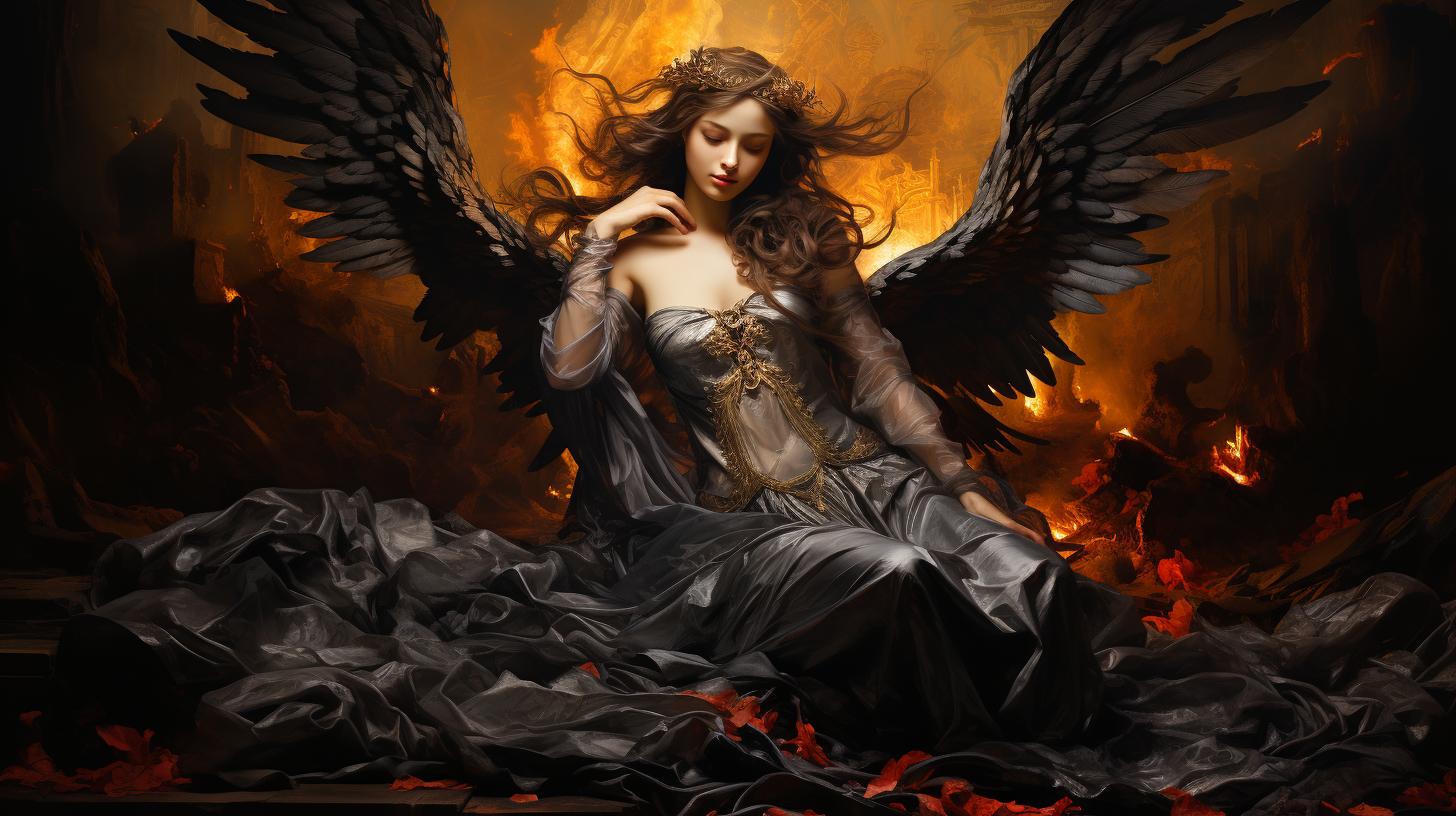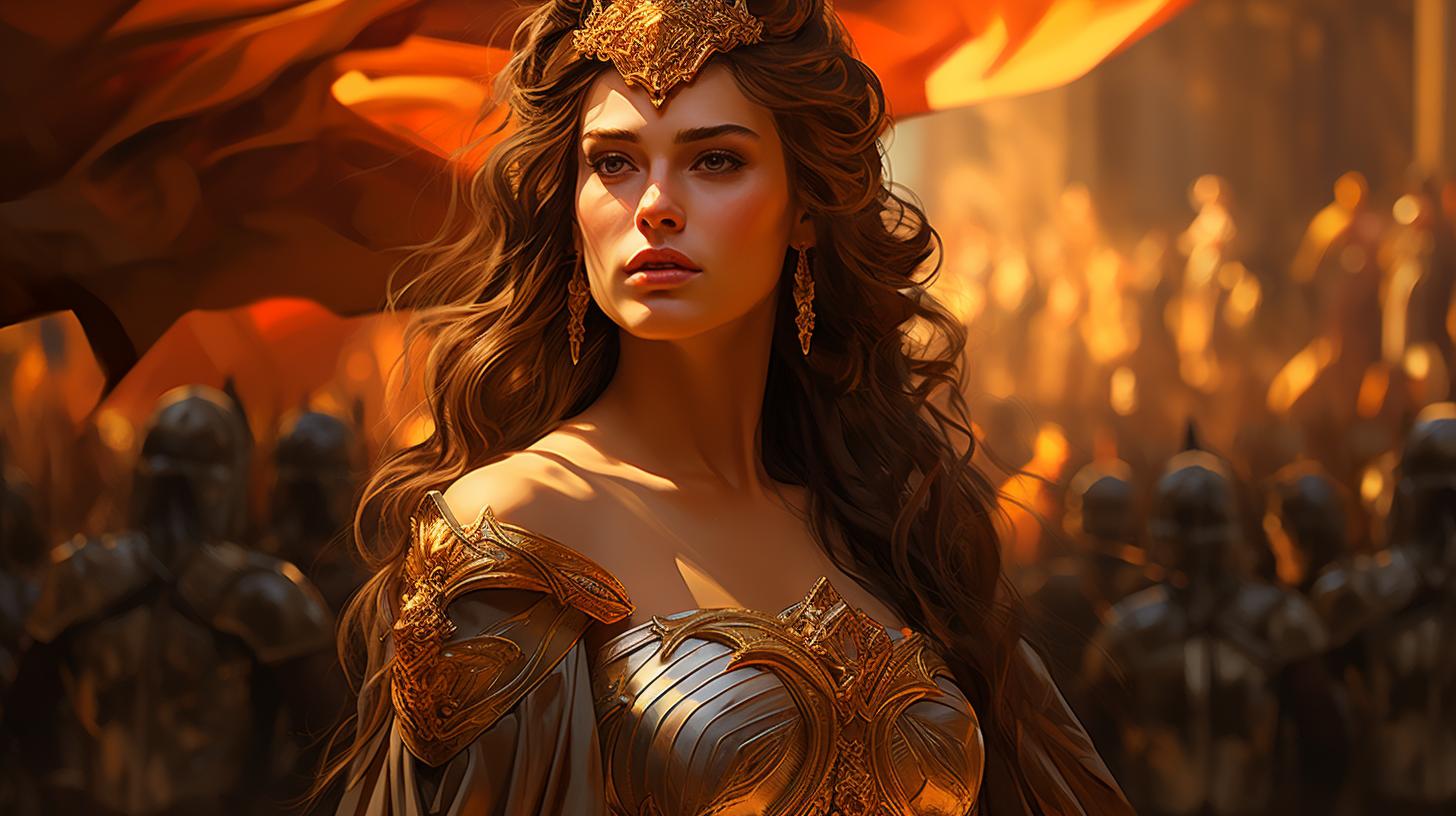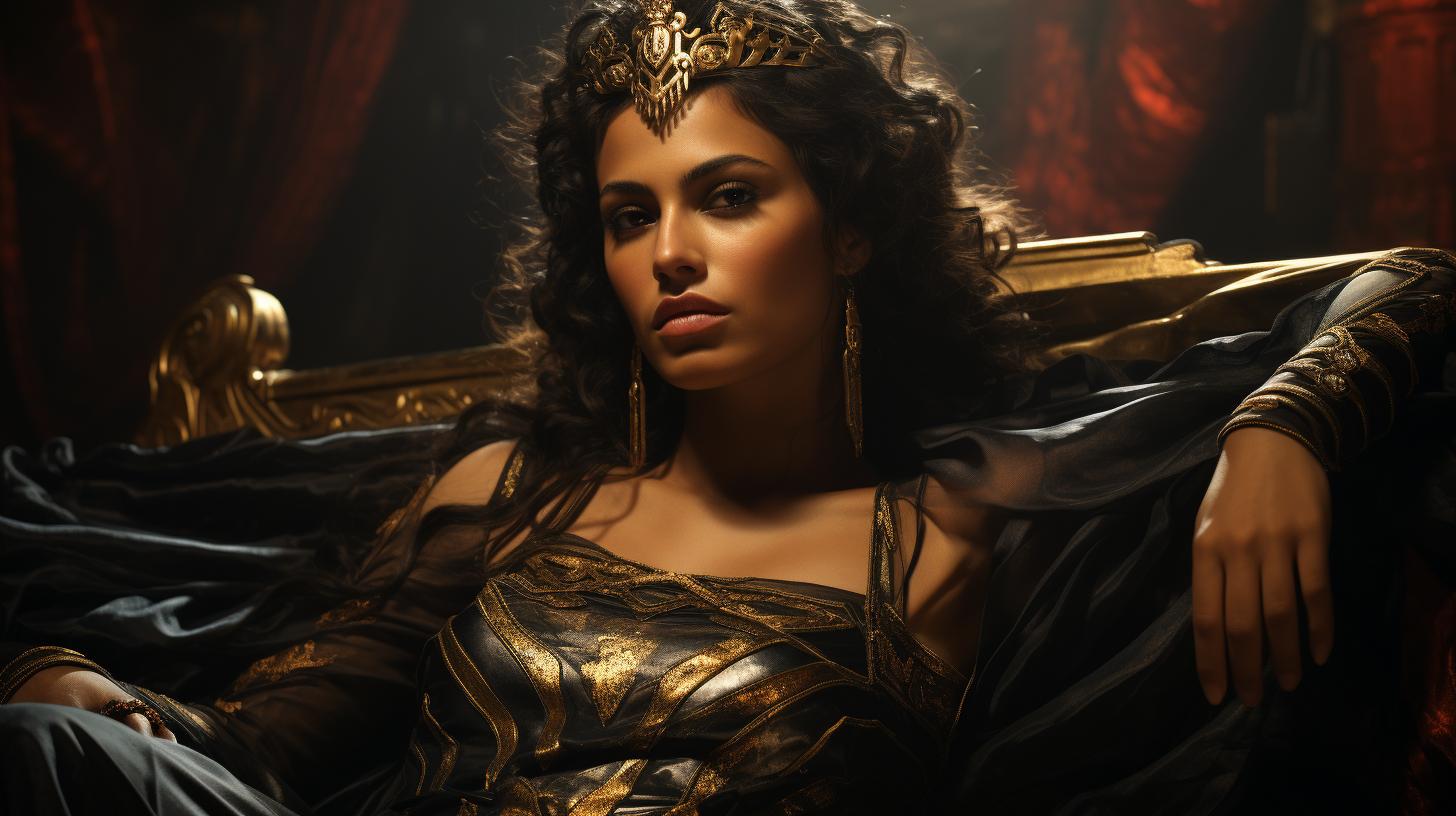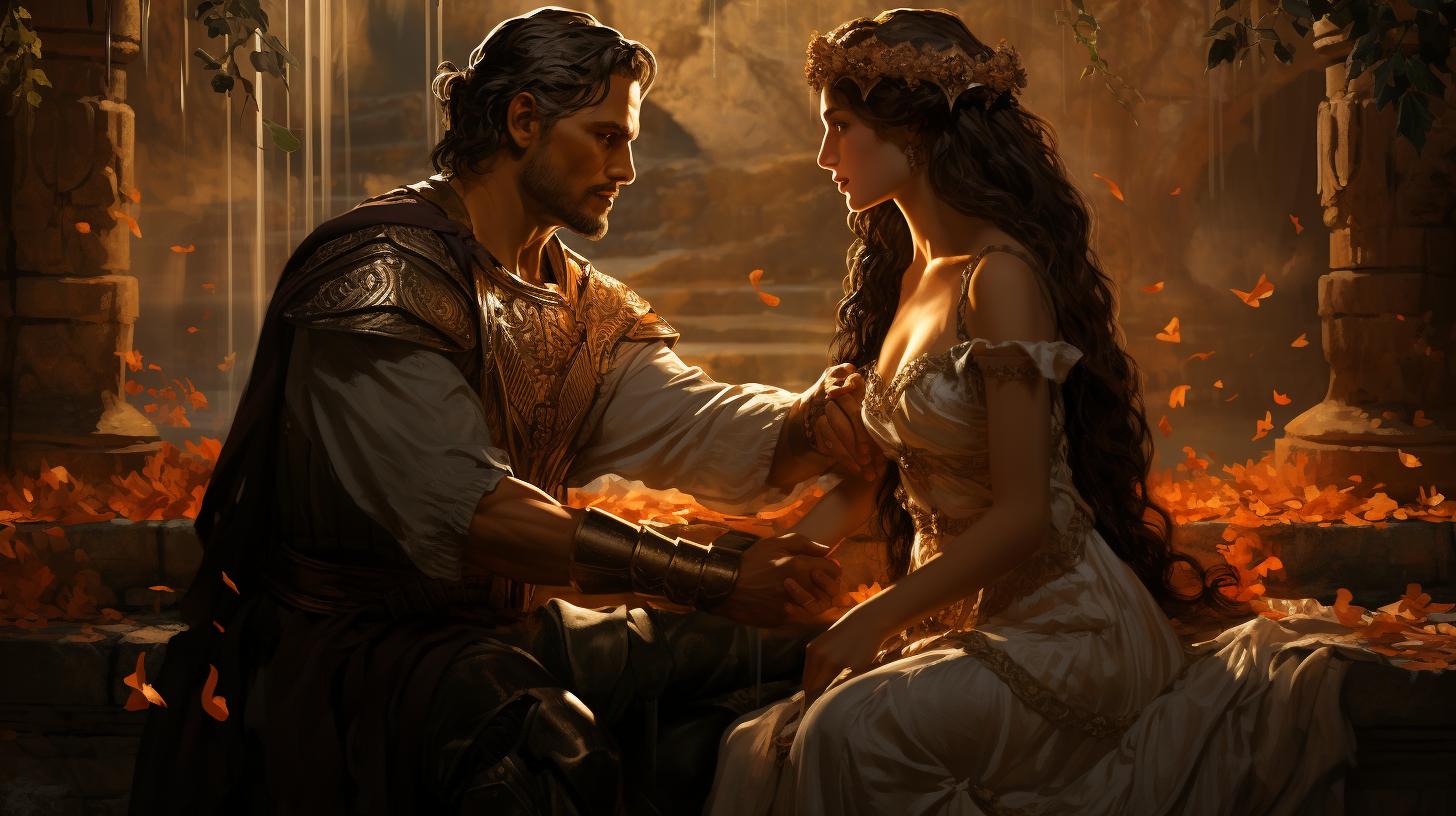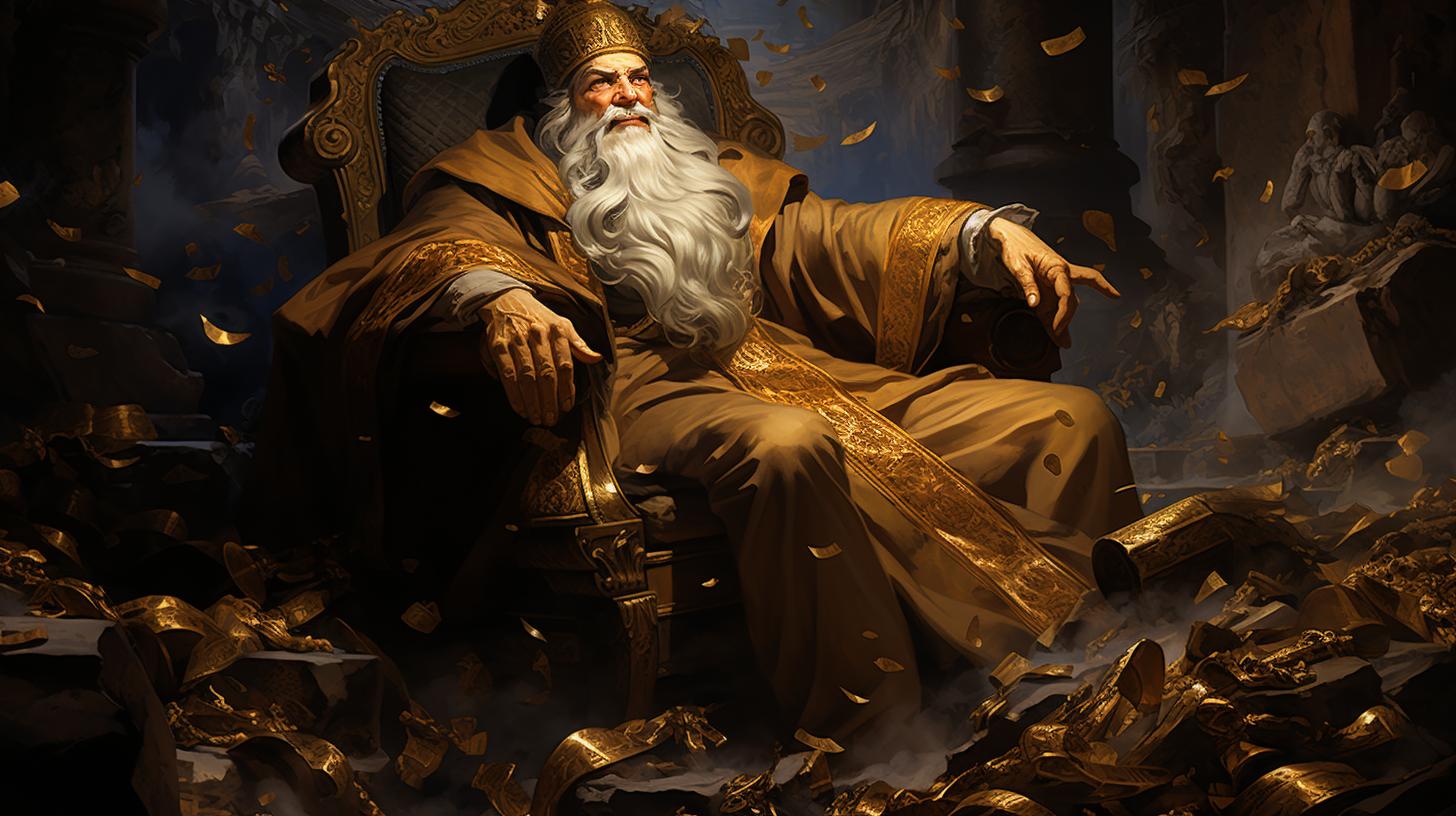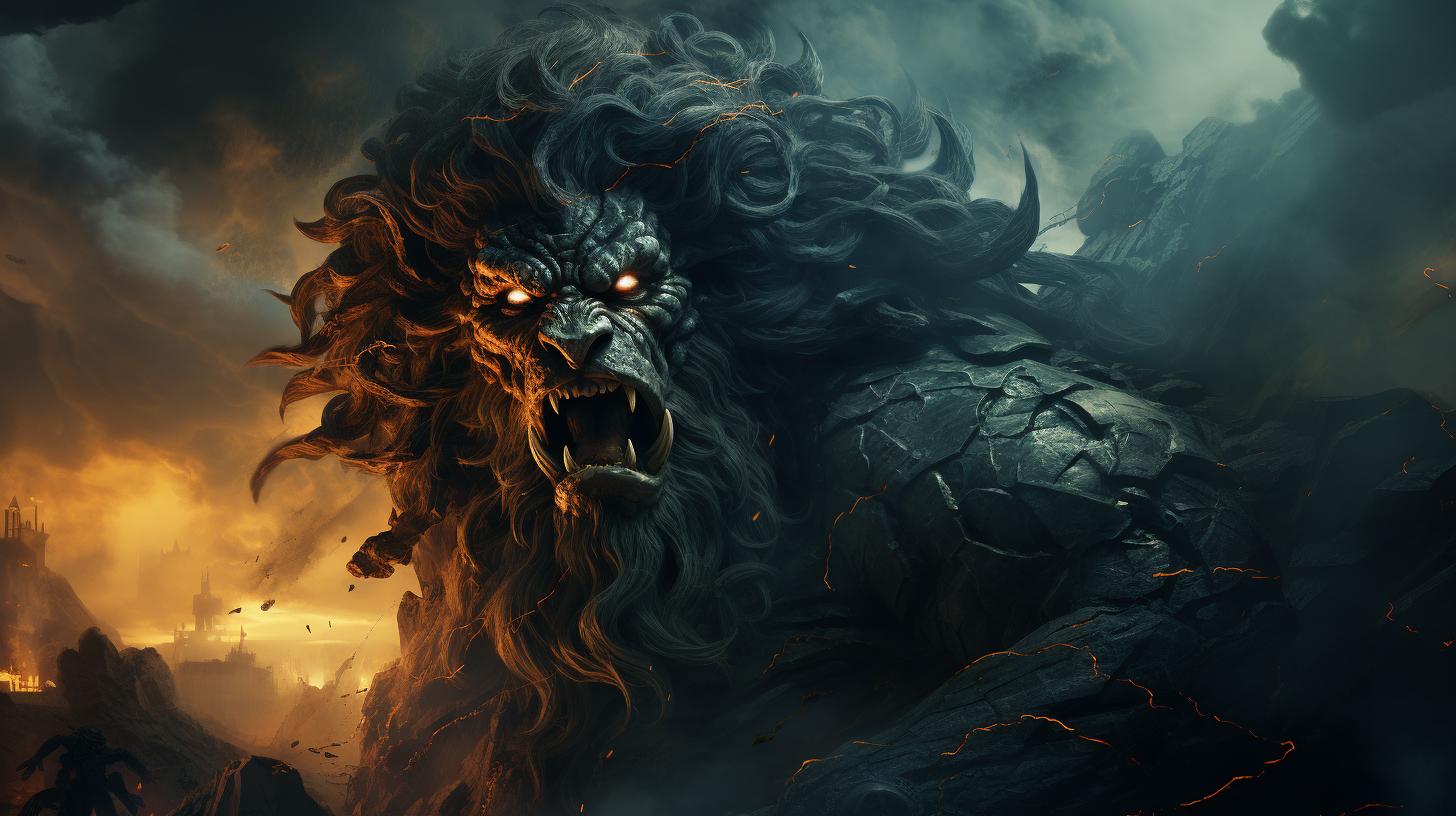Unveiling the Legends of Polybotes in Greek Mythology
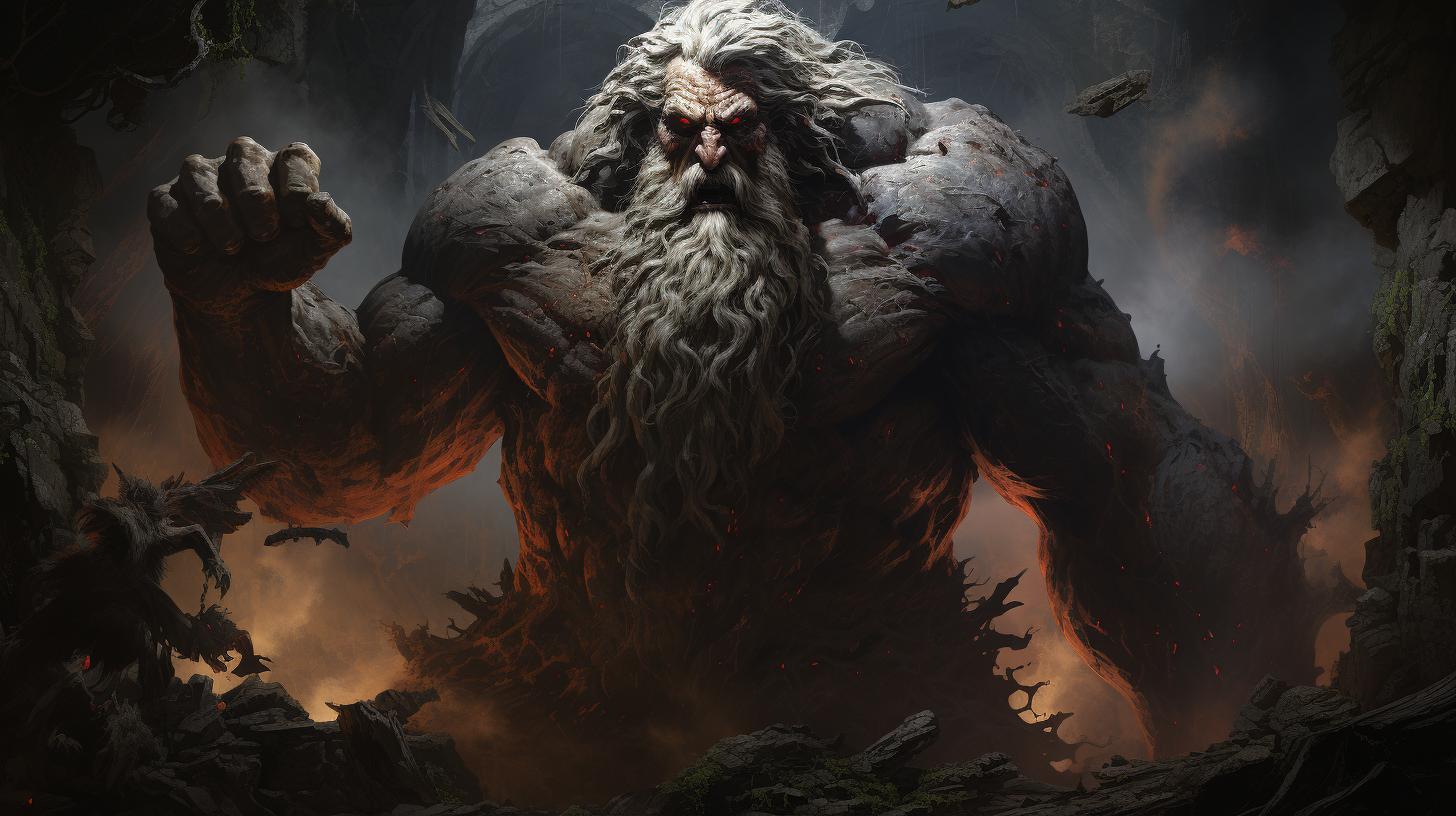
Polybotes, the fearsome and powerful sea giant of Greek mythology, has left a lasting mark in ancient tales and legends. With an imposing appearance and colossal body measuring approximately 18 to 22 meters, Polybotes instills deep fear in those who dare to confront him.
Known for his ability to generate storms, volcanic eruptions, and swallow entire ships, he is notorious for creating tsunamis and hurricanes. This article delves into the origins, powers, battles, symbolism, and defeat of Polybotes, exploring his role in Greek mythology and his depiction in art and literature.
The Origins of Polybotes
In Greek mythology, Polybotes is a formidable sea giant whose origins are intertwined with the primordial deities known as the Titans. According to the ancient texts, Polybotes is the son of Gaia, the personification of the Earth, and Pontus, the personification of the sea.
As the child of these powerful entities, Polybotes possesses immense strength and a fierce nature. He is often depicted as a monstrous being with a colossal body, measuring approximately 18 to 22 meters long, covered in spines that are believed to be venomous.
Like many other giants in Greek mythology, Polybotes played a significant role in the Gigantomachy, the epic battle between the Giants and the Olympian gods. He fought alongside his fellow giants, who sought to overthrow Zeus and the other gods, and reclaim dominion over the cosmos.
However, the specific circumstances of Polybotes’ birth and early life vary in different mythological accounts, reflecting the diverse nature of Greek mythology. Some versions suggest that Polybotes was conceived through the union of Poseidon, the god of the sea, and Gaia, while others attribute his creation solely to Gaia.
Regardless of his exact origins, Polybotes is consistently portrayed as a menacing force of nature, with the ability to generate storms, cause volcanic eruptions, and swallow ships whole.
His fearsome reputation and destructive powers have left a lasting impression on the ancient tales and legends.
The Powers and Abilities of Polybotes
As a mighty sea giant, Polybotes possesses an array of formidable powers and abilities that have struck fear into the hearts of sailors and mortals alike. Here are some of the notable powers attributed to Polybotes in Greek mythology.
- Control over Storms: Polybotes has the supernatural ability to generate and manipulate powerful storms at sea. His mere presence can unleash furious winds, torrential rains, and turbulent waves, wreaking havoc on any vessels unfortunate enough to cross his path.
- Tsunami Creation: With his immense size and strength, Polybotes can create massive tsunamis capable of decimating coastlines and swallowing entire ships.
The destructive force of these colossal waves is a testament to the terrifying power he holds.
- Volcanic Influence: Polybotes is notorious for his connection to volcanic activity. He possesses the ability to induce eruptions, causing molten lava to spew forth from the depths of the earth.
The sight of flames and billowing smoke served as a constant reminder of the wrath he could unleash upon the world.
- Precision in Ship Destruction: The sea giant’s immense strength allows him to effortlessly snatch ships from the water and devour them whole.
His massive jaws, capable of opening at an astounding 70-degree angle, make quick work of unfortunate vessels caught in his path. He can also hurl colossal rocks using his tail, ensuring the complete annihilation of any vessels foolish enough to challenge him.
- Fearsome Presence: Polybotes’ sheer size and monstrous appearance strike fear into the hearts of those who lay eyes upon him.
His glowing eyes, sharp spines lining his back and tail, and elongated head with two menacing heads create an imposing and terrifying visage that instills deep dread in those brave enough—or unlucky enough—to face him.
These powers, combined with his immense aggression and relentless nature, make Polybotes a truly formidable adversary in Greek mythology, forever etching his name into the annals of legend and inspiring terror in the hearts of mortals.
The Battle between Polybotes and Poseidon
In Greek mythology, the epic battle between Polybotes and Poseidon is a legendary clash of titanic proportions. As the god of the seas and earthquakes, Poseidon proved to be a formidable opponent for the monstrous sea giant.
The battle took place during the Gigantomachy, a mythical war between the Giants and the Olympian gods.
Polybotes, fueled by his immense strength and destructive nature, challenged Poseidon’s authority over the seas.
With his ability to generate storms and summon powerful waves, Polybotes aimed to overpower Poseidon and claim dominion over the vast oceans.
Poseidon, armed with his trident, unleashed his wrath upon Polybotes.
The battle raged across land and sea, with Poseidon using his mastery of the elements to counter the monstrous attacks of his adversary. The clash between these two titanic forces created chaos and devastation, as the very foundations of the earth trembled beneath their might.
Polybotes, relentless in his pursuit of victory, aimed to crush Poseidon under the weight of his colossal power. However, Poseidon’s divine strength and strategic prowess proved to be insurmountable.
With a combination of thunderous strikes from his trident and manipulation of the seas, Poseidon gained the upper hand in the battle.
The final blow came when Poseidon, fueled by his indomitable determination, unleashed a mighty surge of energy, shattering the body of Polybotes.
The sea giant’s defeat was resounding, and his remains were cast into the depths of the ocean, where they would forever remain.
The battle between Polybotes and Poseidon stands as an epic testament to the power of the gods and their ability to triumph over even the mightiest of foes.
It serves as a reminder of the eternal struggle between chaos and order, chaos represented by the destructive forces of Polybotes and order maintained by the presence of Poseidon, the divine guardian of the seas.
The Gigantomachy: Giants vs. Gods
The Gigantomachy is a significant conflict in Greek mythology that pitted the powerful giants, including Polybotes, against the gods of Olympus. This epic battle was a culmination of tensions between the two groups and symbolized the struggle between chaos and order, primal forces and civilization.
According to the myths, the giants, born from Gaia (the Earth) and Uranus (the Sky), grew in size and power, posing a threat to the gods’ dominion. The gods, led by Zeus, could not allow the giants to challenge their authority and jeopardize the harmony of the cosmos.
The Gigantomachy was a full-scale war, with both sides deploying their formidable strengths. The giants, including the mighty Polybotes, possessed immense size, strength, and destructive capabilities. They sought to overthrow the gods and claim Mount Olympus as their own.
The gods, on the other hand, had their divine powers, superior strategy, and an array of weapons at their disposal. Zeus and his family of Olympians, aided by the Cyclopes and Hecatonchires, stood united against the giant onslaught.
The battle raged on for a great duration, with epic clashes between gods and giants shaking the very foundations of the Earth. The giants, with their sheer force, unleashed havoc and destruction, while the gods fought back with their divine abilities and cunning tactics.
Polybotes, known for his tremendous size and ferocity, was a formidable opponent on the battlefield. With each swing of his massive arms, he attempted to strike fear into the hearts of the gods and bring chaos to their divine order.
Ultimately, the gods emerged victorious in the Gigantomachy. Their combined might, strategic prowess, and divine powers proved too much for the giants to overcome. Zeus, with his mastery over thunder and lightning, played a pivotal role in sealing the victory and preserving the dominance of the gods.
As for Polybotes, his fate was sealed along with the other defeated giants. In the aftermath of the conflict, the gods cast the lifeless bodies of the giants into the depths of Tartarus, where they would remain forever.
The Gigantomachy left a lasting legacy in Greek mythology, serving as a testament to the power and triumph of the gods over chaotic forces. It reinforced the belief in the order and stability maintained by the Olympian pantheon, ensuring the continuation of a harmonious universe.
Polybotes’ Role in Greek Mythology
In Greek mythology, Polybotes played a significant role as one of the fearsome giants known as the Gigantes. These giants were born from the blood of Uranus, the sky god, and Gaia, the earth goddess, after Uranus was castrated by his son Cronus.
Polybotes, known for his immense size and power, was considered a formidable adversary in the ancient tales.
He represented the chaotic forces of nature, particularly the destructive power of the sea. With his ability to incite storms, create tsunamis, and swallow ships, Polybotes became a symbol of fear for sailors navigating the treacherous waters of the Mediterranean.
As a creature of aggression, Polybotes was often portrayed as a malevolent force, attacking both ships and individuals who crossed his path. He didn’t discriminate, showing neither mercy nor favoritism. His actions were driven by a primal instinct to assert dominance and wreak havoc in the realm of the sea.
Interestingly, Polybotes’ parentage added further depth to his role in mythology. Some versions of the tales identified him as the son of Poseidon, the god of the sea, emphasizing his close connection to the domain he terrorized.
This association reinforced his status as a symbol of the untamed and unpredictable nature of the ocean.
In the grand scheme of Greek mythology, Polybotes’ presence served as a contrasting force to the gods’ power.
His reign of terror highlighted their role as protectors and maintainers of order and stability. The constant battle between the gods and giants, known as the Gigantomachy, exemplified the eternal struggle between chaos and civilization.
While Polybotes met his ultimate demise at the hands of Triton, the god of the sea, his role in Greek mythology remains as a reminder of the forces that humans must contend with in the natural world.
His legend stands as a cautionary tale and a testament to the power and unpredictability of the elements, particularly the vastness and dangers of the sea.
The Symbolism and Representation of Polybotes
Polybotes, the formidable sea giant of Greek mythology, holds significant symbolism and representation in ancient Greek culture.
His menacing presence and destructive powers have made him an embodiment of chaos, danger, and the untamed forces of nature. Here, we explore the various aspects of symbolism and representation associated with Polybotes.
Negative Symbolism
- Disruption and Destruction: Polybotes symbolizes the disruptive and destructive forces of the sea. His ability to generate storms, cause hurricanes, and create tsunamis represents the uncontrollable power of nature that threatens the safety and stability of seafarers.
- Bad Luck and Misfortune: Sailors considered encountering Polybotes as a symbol of impending misfortune, as he was known to destroy ships and hinder navigation.
His very presence was believed to bring bad luck and unfortunate outcomes.
- Menace and Fear: Polybotes’ terrifying appearance, with his colossal size, venomous spines, and ability to devour entire ships, instilled deep fear and terror among those who dared to face him.
He personified the dread and danger lurking in the depths of the sea.
Representation in Art and Literature
Polybotes’ representation in art and literature reflects the awe-inspiring and fearsome nature of this mythological creature.
- Sculptures and Paintings: In visual arts, Polybotes is often depicted as a monstrous sea creature with multiple heads, sharp claws, and lightning bolts protruding from his head.
These representations capture his destructive power and evoke a sense of dread.
- Literary Descriptions: In ancient Greek literature, Polybotes appears in epic poems and myths as a formidable antagonist, embodying chaos and turmoil.
His portrayal emphasizes his ability to generate storms, provoke violent waves, and wreak havoc on seafarers.
In conclusion, Polybotes holds symbolic significance as a representation of disruption, destruction, bad luck, and menace in Greek mythology.
His terrifying nature and destructive powers have been depicted in various art forms and literary works, leaving a lasting impression on the ancient Greek culture.
The Defeat of Polybotes by Triton
After recognizing the immense danger posed by Polybotes, the gods, led by Zeus, devised a plan to put an end to his reign of terror.
They knew they had to confront the ferocious sea giant head-on to protect the mortal world and maintain the balance of power.
Zeus reached out to Triton, one of the mighty sea deities, renowned for his ability to control the forces of the ocean.
Triton willingly accepted the task of confronting Polybotes and ensuring that his destructive wrath would be quelled.
Armed with his powerful trident, Triton descended upon the island where Polybotes resided, ready to engage in a battle of epic proportions.
The clash between Triton and Polybotes shook the earth and sea, unleashing chaos and devastation in their wake.
Triton strategically aimed his trident at Polybotes, targeting the sea giant’s colossal mouth and tail.
With a forceful strike, Triton shattered Polybotes’ mouth, rendering it powerless to create storms or unleash tsunamis. As the trident again descended upon Polybotes, his tail was shattered, eliminating his ability to launch giant rocks at passing ships.
The defeat of Polybotes by Triton marked a significant turning point in the ongoing struggle between the gods and the giants in the Gigantomachy. With Polybotes neutralized, the gods gained a significant advantage, one step closer to their ultimate victory.
The aftermath of their confrontations left Polybotes weakened and futile, forever unable to wreak havoc upon the seas and those who sailed upon them. It was a momentous triumph, celebrated among the gods and revered by mortals who would forever remember the defeat of this feared and malevolent sea giant.
The Aftermath of Polybotes’ Defeat
Following the defeat of Polybotes at the hands of Triton, the god of the sea, the monstrous sea giant’s reign of terror came to an end. Triton, armed with his mighty trident, struck Polybotes with a devastating blow, destroying both his mouth and tail.
As a result, Polybotes lost control over the fierce waves and storms that he had unleashed upon the seas.
The gods, particularly Zeus, recognized the threat that Polybotes posed and took swift action to neutralize him.
They imprisoned the defeated giant in a cave and appointed Triton as the guardian of the island, tasked with preventing Polybotes’ aggression from resurfacing. Through Triton’s intervention, the perilous era of shipwrecks caused by Polybotes’ powers came to an end.
With the defeat of Polybotes, the divine beings ensured that he would never return to wreak havoc again. They cast his lifeless body into the depths of the sea, where it would remain concealed for eternity.
This act served as a final symbol of victory and brought relief to the sailors who had long feared encountering the unsettling presence of Polybotes in their journeys.
The conclusion of Polybotes’ tale symbolizes the triumph of divine power over monstrous aggression and chaos.
Through the combined efforts of the gods, namely Zeus and Triton, the destructive capabilities of Polybotes were neutralized, and the seas became safer for seafarers.
Common Questions and Myths about Polybotes
As one of the most feared creatures in Greek mythology, Polybotes has sparked curiosity and given rise to various questions and myths.
In this section, we delve into some of the common inquiries surrounding this mighty sea giant.
- 1. Is Polybotes a god or a monster?
- 2. What are Polybotes’ most notable powers?
- 3. How was Polybotes defeated?
- 4. What is the symbolism of Polybotes?
- 5. Are there any known encounters with Polybotes in Greek mythology?
Polybotes is often referred to as a monster rather than a god.
Although he is said to be the son of Poseidon in some versions of Greek mythology, his monstrous appearance, destructive abilities, and aggressive nature classify him as a fearsome creature rather than a deity.
Polybotes possesses immense strength and has the ability to generate storms, boil the oceans, and cause volcanic eruptions. His most destructive power lies in his capability to create tsunamis and hurricanes, unleashing waves of epic proportions that can ravage ships and coastal areas.
Triton, the god of the sea, played a crucial role in bringing an end to Polybotes’ reign of terror. Armed with his trident, Triton destroyed Polybotes’ mouth and tail, stripping the sea giant of his control over waves and storms.
This defeat rendered Polybotes powerless and unable to wreak havoc on the seas and navigation.
Polybotes is often associated with bad luck and serves as a symbol of the treacherous and unpredictable nature of the sea.
He represents the dangers faced by sailors and the turbulent forces of nature that can both awe and threaten humanity. In art and literature, Polybotes is depicted as a malevolent being with horns, claws, and lightning emanating from his head, emphasizing his role as a harbinger of storms and destruction.
While there are no specific stories recounting encounters with Polybotes, his presence loomed over the waters of the Mediterranean.
Sailors feared the wrath of this monstrous sea giant and spoke of his destructive acts, warning others to steer clear of his territory. Polybotes’ reputation as a formidable nemesis to seafarers remains a prevalent theme in Greek maritime lore.
Exploring the common questions and myths surrounding Polybotes provides deeper insight into the awe-inspiring and menacing aura of this colossal creature in Greek mythology.
Polybotes and the Greek Pantheon: Relationships and Interactions
Polybotes, the formidable sea giant of Greek mythology, had significant interactions and relationships with various deities in the Greek pantheon.
Let’s explore some of these connections:
Poseidon
Poseidon, the mighty god of the sea, plays a central role in the relationship between Polybotes and the gods. As per some versions of the myth, Polybotes is believed to be the son of Poseidon himself.
This familial tie adds an intriguing dimension to their dynamic.
Triton
Triton, the sea god and son of Poseidon, is tasked with protecting the sea and its creatures from Polybotes’ wrath. The defeat of Polybotes is attributed to Triton’s intervention, as he wields his powerful trident to destroy the giant’s mouth and tail, rendering him powerless.
Zeus
Zeus, the king of the gods, recognizes the immense threat posed by Polybotes and takes action to halt his reign of terror. Alongside the other Olympian deities, Zeus traps Polybotes in a cave, ensuring that his destructive powers are neutralized.
Other Olympian Deities
While Poseidon, Triton, and Zeus are the main players in the clash with Polybotes, other deities also contribute to the narrative. Goddesses like Athena and Artemis, with their association with the sea, may have played supporting roles in thwarting the giant’s destructive influence.
The Gigantomachy
The Gigantomachy, a mythical battle between the giants and the Olympian gods, provides a broader context for Polybotes’ interactions with the Greek pantheon. In this epic conflict, Polybotes joins forces with his fellow giants to challenge the authority of the gods, igniting a clash of immense proportions.
Symbolism and Themes
Polybotes’ relationship with the Greek deities unveils symbolic themes, such as the struggle between order and chaos, the power of collective divine forces, and the consequences of defying the gods. These themes resonate throughout Greek mythology, reflecting the ancient Greeks’ understanding of the interplay between mortals and gods.
Understanding Polybotes’ interactions with the Greek pantheon enhances our comprehension of this legendary sea giant’s significance in Greek mythology and the broader narratives that shape the ancient Greek world.
Polybotes in Art and Literature
Polybotes, the formidable sea giant of Greek mythology, has been a subject of fascination for artists and writers throughout history. His monstrous appearance and destructive powers have inspired various artistic interpretations, ranging from intricate sculptures to vivid paintings.
In ancient Greek art, Polybotes was often depicted as a fearsome creature with multiple heads and a colossal body. Sculptures and reliefs showcased his imposing figure, capturing the terror he instilled in the hearts of sailors and those who dared to cross his path.
These representations highlighted his fierce nature and underscored the danger he posed to seafarers.
Over the centuries, Polybotes has also found his place in literary works. Writers and poets have woven his myth into their narratives, showcasing his role as a formidable antagonist.
His ability to conjure storms, generate tsunamis, and swallow ships whole has made him a symbol of chaos and destruction in literature. His battles with the gods and his ultimate defeat at the hands of Triton have provided rich material for epic tales and dramatic retellings.
Contemporary artists continue to draw inspiration from Polybotes, incorporating his imagery into their creations. Paintings, digital artwork, and illustrations capture the essence of his power and evoke a sense of awe and trepidation.
Through these visual representations, artists explore the theme of man’s struggle against the forces of nature and the consequences of defying the gods.
In literature, Polybotes stands as a powerful symbol of nature’s wrath and the consequences of challenging divine authority.
His presence serves as a cautionary tale, reminding us of the perils that lie in defiance of the natural order. From ancient sculptures to modern artworks and from epic poems to contemporary novels, Polybotes’s mythos continues to captivate and resonate with audiences, immortalizing his fearsome reputation in the realms of art and literature.
.











